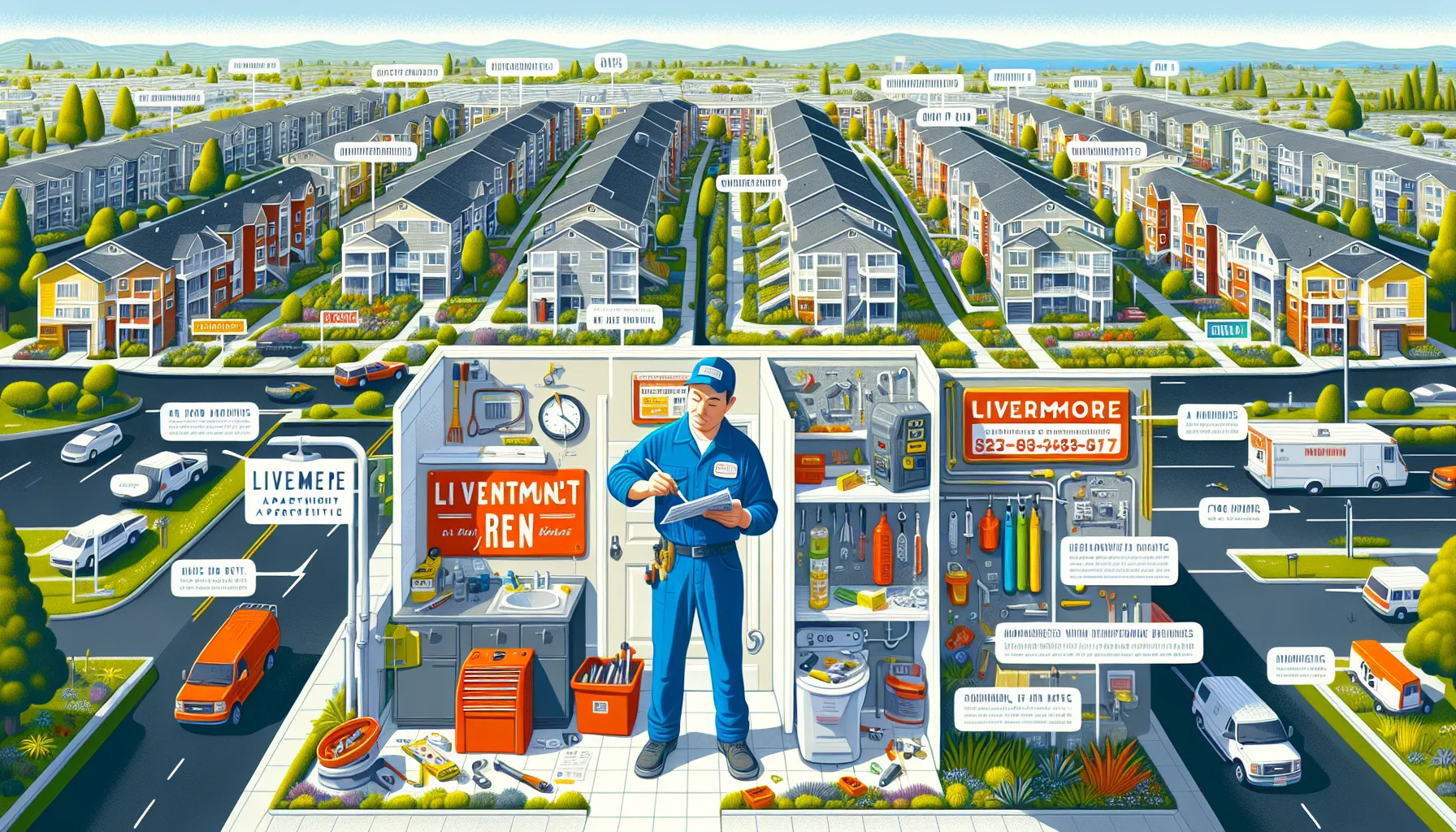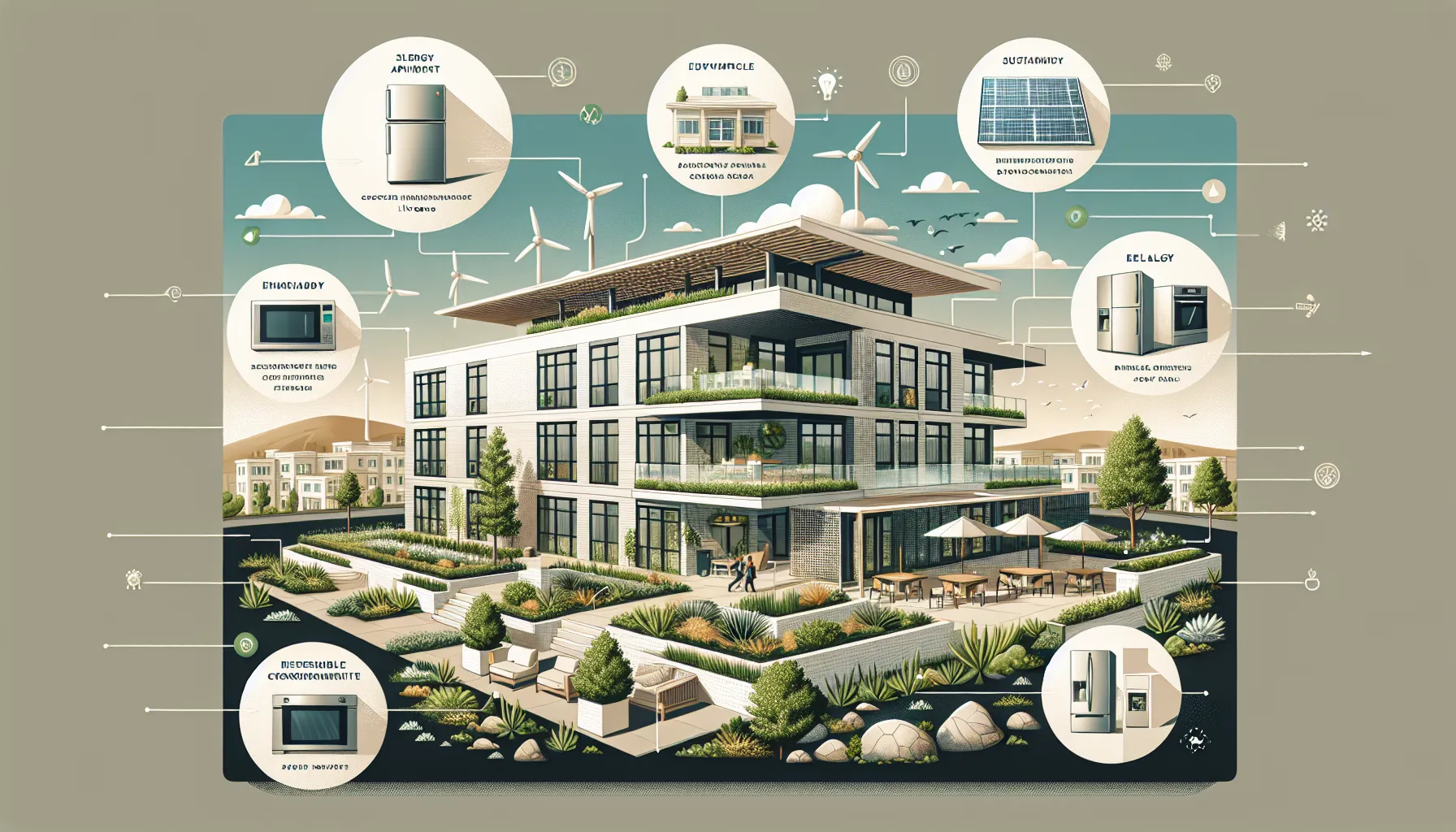Key Takeaways
- Efficient apartment turnover benefits both property owners and tenants, reducing downtime, minimizing costs, and fostering positive relationships during transitions.
- Proactive planning is key: Scheduling maintenance, budgeting for turnover expenses, and setting clear timelines helps streamline the process and avoid disruptions.
- Tenant satisfaction plays a major role in minimizing turnover: Open communication, timely resolutions of issues, and retention incentives encourage long-term leases.
- Economic trends and market demand influence turnover rates: Staying informed on Livermore’s local economy and rental market conditions helps owners anticipate shifts and remain competitive.
- Upgraded amenities and well-maintained properties attract tenants: Features such as energy-efficient appliances, modernized spaces, and shared facilities improve tenant retention and reduce vacancies.
- Leveraging technology streamlines turnover processes, from digital marketing to efficient tenant screening, ensuring faster and smoother transitions between occupants.
Apartment turnover can be a challenging process, especially in a vibrant rental market like Livermore. Whether you’re a property owner or a tenant, the transition between renters brings both opportunities and potential stress. How do you balance maintaining your property, meeting timelines, and ensuring a smooth handoff? These are questions many face during this critical phase.
For property owners, turnover is more than just preparing for the next tenant. It’s about making strategic decisions that protect your investment and maximize returns. For tenants, it’s often about leaving on good terms and ensuring everything is in order. With so much at stake, understanding the process and planning ahead can make all the difference.
What steps can you take to simplify the turnover process? Let’s explore practical solutions that can help both property owners and tenants navigate this transition with confidence and ease.
Understanding Livermore Apartment Turnover
Apartment turnover in Livermore involves various steps, starting with preparing the property after a tenant moves out. Repairs, cleaning, and inspections all play a critical role in getting the unit ready for new occupants. Owners who prioritize this process reduce vacancy periods and attract responsible tenants.
Turnover costs can add up quickly. Cleaning fees, repair expenses, and possible marketing costs should be accounted for when planning budgets. How do you currently manage these aspects? Understanding these financial requirements is key to minimizing surprises when a unit becomes vacant.
Tenants also impact this process. Returning a property in good condition reduces disputes and fosters positive relationships. This might involve addressing wear and tear, resolving minor issues, and thoroughly cleaning the unit before vacating. Have you considered how open communication with tenants could simplify these transitions?
For owners, an efficient turnover often depends on setting realistic timelines. Scheduling maintenance and marketing within specific timeframes improves occupancy rates. Are you taking advantage of seasonal demand or peak rental periods in Livermore? Timing can significantly influence success.
By preparing for both expected and unexpected challenges, apartment turnover becomes manageable. Clear communication, organized processes, and foresight help create mutually beneficial outcomes for everyone involved.
Key Factors Influencing Turnover Rates

Apartment turnover rates in Livermore are shaped by several interconnected factors. Property owners and tenants can benefit from understanding these influences to make informed decisions and reduce disruptions.
Economic Trends in Livermore
Economic conditions significantly impact turnover rates in Livermore. A growing local economy often leads to stable rental demand, while economic slowdowns may increase vacancies. Job growth can attract more tenants to the area, driving higher occupancy rates, while layoffs or increased unemployment might cause tenants to move out abruptly. Pay attention to changes in sectors like technology or manufacturing, as these industries often shape housing demand. Are you monitoring how shifts in employment are influencing your property’s occupancy levels?
Rental Market Demand and Supply
The balance between available rentals and tenant demand directly influences turnover. High demand with limited inventory tends to reduce turnover, as tenants are less likely to risk losing their current housing. Conversely, if the market sees a surge in rental listings, tenants may move more frequently in search of better options or lower rent costs. Consider the impact of new developments in Livermore and how they might shift this balance. Does your property stand out to tenants in a potentially competitive market?
Tenant Preferences and Lifestyle Shifts
Tenant needs and preferences can change over time, affecting their decisions to renew leases or move out. Features such as updated appliances, energy-efficient systems, or proximity to amenities like parks and schools often influence tenant satisfaction. Younger tenants may prioritize flexibility, seeking options that allow for hybrid work setups or easy commutes. Meanwhile, families might focus more on space and neighborhood safety. Have you assessed whether your property aligns with what renters value most in today’s market?
Challenges of High Turnover in Livermore Apartments

The high turnover rate in Livermore apartments presents recurring challenges for landlords and property managers. Addressing these issues effectively helps maintain occupancy levels and financial stability. What steps can property owners take to reduce turnover and its associated difficulties?
Financial Impact on Landlords
Frequent turnovers often mean additional expenses for landlords. Costs for cleaning, repairs, and advertising pile up quickly between tenants. For instance, even minor repairs like painting walls or fixing damaged fixtures can add up, especially when preparing units frequently.
Vacancy periods represent another significant financial burden. Missing out on rental income, even for a few weeks, can disrupt cash flow. When handling multiple properties, landlords might feel the pressure of covering expenses without rental revenue. What strategies can help balance these financial pressures? Allocating part of monthly rents into a turnover reserve could act as a buffer during such times.
Maintenance and Operational Strains
Short gaps between tenants strain maintenance teams and property managers. Deep-cleaning units, conducting inspections, and coordinating schedules can become overwhelming with multiple turnovers. Fast turnovers might lead to overlooked maintenance, compromising the apartment’s condition.
Apartments left in poor shape by outgoing tenants further complicate the process. Unexpected repairs, such as drywall holes or appliance replacements, increase stress and delay leasing efforts. Being proactive with annual inspections and clear move-out guidelines for tenants can limit surprises. What improvements to operational workflows could ease these demands? Simplifying scheduling and having reliable contractors can make transitions smoother.
Strategies to Reduce Apartment Turnover

Minimizing apartment turnover starts with proactive approaches that address tenant satisfaction, competitive pricing, and property quality. These strategies build trust, encourage loyalty, and maintain consistent occupancy rates.
Enhancing Tenant Retention Programs
Retaining tenants begins by fostering a reliable and open relationship. Regular communication, such as periodic check-ins or surveys, helps identify concerns before they escalate. What are tenants’ common concerns? Understanding their needs can drive meaningful adjustments. Offering lease renewal incentives, like a discounted monthly rate or free deep cleaning, motivates tenants to stay. Hosting small community events strengthens tenant connections and comforts residents, creating a stronger sense of belonging.
Competitive Rental Pricing
Pricing affects turnover. Research rental rates in your local market to set fair and attractive pricing. Are your rates flexible enough to compete without harming revenue? Offer value by highlighting property features, maintenance reliability, or included utilities. For long-term tenants, periodic reviews of their rental rates can encourage renewals while addressing inflationary pressures. A well-structured pricing model can position the property competitively while retaining tenants.
Improving Apartment Amenities
Apartment updates can significantly impact tenant satisfaction. Are residents looking for modernized spaces or convenient features? Simple improvements such as upgraded bathroom fixtures, updated kitchen appliances, or fresh paint can make a lasting impression. Including practical amenities, like high-speed internet connections or in-unit laundry, attracts tenants prioritizing convenience. Creating shared spaces, such as fitness centers or outdoor lounges, appeals to residents seeking a comfortable living environment. Enhanced amenities reflect attention to detail, encouraging tenants to renew their leases.
The Future of Livermore Apartment Turnover

Apartment turnover in Livermore is shifting as market conditions, tenant expectations, and property management practices evolve. Property owners who anticipate these changes stand to gain a competitive advantage. How can owners prepare for future demands while maintaining profitability?
Economic factors strongly influence turnover rates. A booming economy could stabilize rental income, while downturns might increase vacancies. To adapt, I focus on flexible strategies, such as building cash reserves and monitoring local employment trends. What steps are you taking to stay ahead of economic shifts?
Tenant preferences are also transforming the market. Many renters seek modern amenities, energy-efficient options, and flexible lease terms. Keeping properties updated with these features can improve retention. For example, installing smart home devices or energy-efficient appliances often attracts long-term tenants. Small upgrades can lead to significant results.
Technology continues to impact how vacancies are filled. Online platforms make it faster to market units and screen applicants. I’ve found that investing in digital marketing and thorough screening tools saves time and reduces vacancy periods. Could technology improve how quickly your rentals are leased?
Sustainability trends are shaping expectations, too. Eco-conscious renters prefer properties with solar panels, low-flow fixtures, or environmentally friendly landscaping. Incorporating sustainable practices not only appeals to tenants but also cuts operational costs over time. How could green initiatives benefit your properties?
Increased attention to tenant satisfaction is another key trend. Establishing good communication fosters trust and encourages renewals. I rely on transparent policies and regular check-ins to strengthen relationships. Are you connecting regularly with your tenants to address concerns promptly?
Anticipating Livermore’s housing needs means staying informed on local policies and market trends. Planning ahead helps reduce unexpected turnover costs and stabilize income. Taking proactive steps today can position your properties for long-term success.
Conclusion
Navigating apartment turnover in Livermore requires a thoughtful approach that balances financial planning, proactive maintenance, and tenant satisfaction. By staying ahead of market trends and embracing strategies that enhance property value and tenant retention, both owners and tenants can benefit from smoother transitions. Success lies in preparation, clear communication, and adaptability to changing demands, ensuring long-term stability and profitability in a competitive rental market.
Frequently Asked Questions
What is apartment turnover?
Apartment turnover refers to the process of preparing a rental property for a new tenant after the previous one moves out. It includes cleaning, repairs, inspections, and marketing to attract new renters. A well-planned turnover ensures minimal vacancy periods and smooth transitions.
How can property owners minimize turnover costs?
Property owners can minimize costs by budgeting for cleaning, repair, and marketing expenses. Creating a turnover reserve from monthly rent can prevent financial surprises. Regular maintenance, clear move-out guidelines, and proactive inspections also reduce unexpected expenses.
How do tenants contribute to a smooth turnover process?
Tenants can contribute by returning the property in good condition, cleaning thoroughly, and addressing minor repairs before moving out. Open communication with landlords about move-out timelines helps simplify the process and fosters positive relationships.
What factors influence apartment turnover rates in Livermore?
Turnover rates in Livermore depend on rental market demand, economic trends, tenant preferences, and the availability of rental properties. A growing economy stabilizes demand, while oversupply and outdated amenities can lead to higher turnovers.
How can landlords reduce apartment turnover?
Landlords can reduce turnover by enhancing tenant satisfaction through competitive pricing, improved amenities, and fostering strong tenant relationships. Regular communication, understanding tenant needs, and offering value-driven living experiences encourage lease renewals.
What are the financial impacts of high turnover rates?
Frequent turnovers increase expenses for cleaning, repairs, and marketing while causing vacancy periods that disrupt cash flow. Property owners may face operational strains, especially when managing multiple properties, making proactive budgeting essential.
Why is effective communication important during the turnover process?
Effective communication ensures clarity on expectations, timelines, and responsibilities for tenants and landlords. It avoids disputes, fosters trust, and helps both parties navigate the transition process smoothly.
How do economic changes affect apartment turnover in Livermore?
Economic growth stabilizes rental demand, reducing turnover. Conversely, economic downturns can lead to higher vacancies as tenants relocate or face financial difficulties. Monitoring local employment trends helps property owners adapt to these changes.
What role do modern amenities play in tenant retention?
Modern amenities, such as energy-efficient features and smart home devices, significantly improve tenant satisfaction. Properties with updated amenities are more appealing, increasing the likelihood of lease renewals and reducing turnover rates.
How can technology help property owners manage turnovers?
Technology streamlines the turnover process by enabling digital marketing, tenant screening, and efficient communication. Online platforms help attract quality tenants quickly, reducing vacancy periods and operational inefficiencies.
What’s the benefit of sustainable initiatives in rental properties?
Sustainable practices, like installing energy-efficient appliances or using eco-friendly materials, attract eco-conscious renters. These initiatives lower utility costs, improve tenant satisfaction, and positively impact turnover rates while supporting environmental goals.
What proactive measures can landlords take to streamline turnovers?
Landlords should conduct annual inspections, set clear move-out guidelines, and allocate sufficient time for maintenance and marketing. These measures reduce surprises, ensure quality, and maximize occupancy rates.
